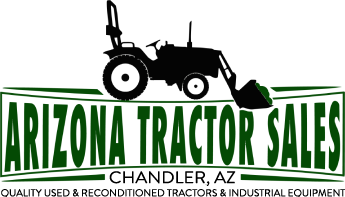Proper Loading and Securing a Tractor: Ensuring Safety and Compliance
Jun. 25 2024
Hauling tractors
Transporting tractors involves meticulous attention to proper loading and securing procedures. Failing to secure a tractor adequately can lead to accidents, damage to the equipment, and violations of FDOT and DOT regulations. Here's a detailed guide on best practices for loading and securing tractors for transport.
Preparing for Loading
Select the Right Equipment
- Transport Vehicle: Choose a flatbed trailer or lowboy trailer capable of handling the weight and size of the tractor.
- Securing Devices: Gather chains, binders, straps, and other necessary securing devices. Ensure they are rated for the weight of the tractor.
Inspect the Tractor and Trailer
- Tractor Condition: Ensure the tractor is in good condition, with no loose parts or leaks that could affect its stability during transport.
- Trailer Condition: Check the trailer for any signs of damage or wear. Ensure the deck is clean and free of debris that could interfere with securing the tractor.
Plan the Loading Process
- Loading Area: Choose a flat, stable area for loading. Avoid areas with uneven terrain or slopes.
- Loading Equipment: If using ramps, ensure they are sturdy and properly positioned. Consider using a loading dock if available for safer loading.
Loading the Tractor
Position the Trailer
- Align the trailer with the loading area. Ensure it is parked on a level surface and the parking brake is engaged.
Load the Tractor Safely
- Using Ramps: Drive the tractor slowly up the ramps, maintaining a steady speed. Ensure ramps are secure and can support the weight.
- Using a Loading Dock: Back the trailer to the loading dock and drive the tractor onto the trailer, ensuring smooth and careful movement.
Position the Tractor on the Trailer
- Weight Distribution: Position the tractor to ensure even weight distribution. The center of gravity should be low and centered to prevent tipping.
- Axle Load: Ensure the weight is distributed appropriately across the axles to comply with legal weight limits.
Securing the Tractor
Use Appropriate Securing Devices
- Chains and Binders: Heavy-duty chains and binders are typically used for securing tractors. Ensure they are rated for the tractor's weight.
- Straps: Heavy-duty straps can be used in addition to chains for extra security.
Secure the Tractor
- Four-Point Tie-Down: Use at least four chains or straps, securing the tractor at four points. Attach the chains or straps to designated tie-down points on both the tractor and the trailer.
- Cross Chains: For added stability, cross chains under the tractor, forming an X shape. This helps prevent lateral movement.
Tighten and Check
- Tightening Devices: Use binders or ratchets to tighten the chains or straps. Ensure they are snug but not over-tightened, as this could damage the securing devices or the tractor.
- Double-Check: Once secured, double-check all chains and straps. Ensure there is no slack and that all securing devices are properly fastened.
Final Checks Before Transport
Inspection
- Walk around the trailer to inspect the load from all angles. Ensure the tractor is centered and securely fastened.
- Check that all securing devices are tight and in good condition.
Documentation
- Verify that all necessary documentation, such as permits and inspection reports, is in order and accessible.
On-the-Road Monitoring
- Regular Stops: Make regular stops during transit to check the load. Ensure the tractor remains secure and that no securing devices have loosened.
- Adjust as Necessary: If any securing devices have loosened, stop immediately and re-tighten them.
Best Practices for Safe Transport
Training
- Ensure that drivers and loading personnel are trained in proper loading and securing techniques. Understanding the importance of load security is crucial for safety and compliance.
Communication
- Maintain clear communication between all team members involved in the loading and transport process. Ensure everyone understands their roles and responsibilities.
Adherence to Regulations
- Stay updated with FDOT and DOT regulations regarding load securing and transport. Compliance with these regulations is essential to avoid penalties and ensure safe transport.
By following these detailed steps and best practices, businesses can ensure that tractors are loaded and secured safely for transport. Proper loading and securing not only comply with regulations but also protect valuable equipment and ensure the safety of drivers and other road users.

